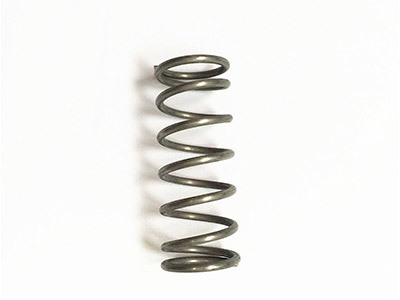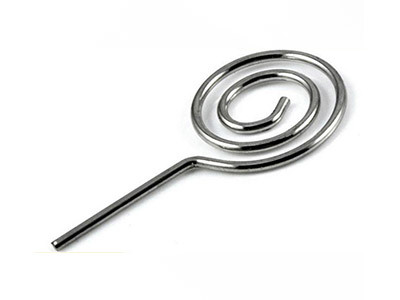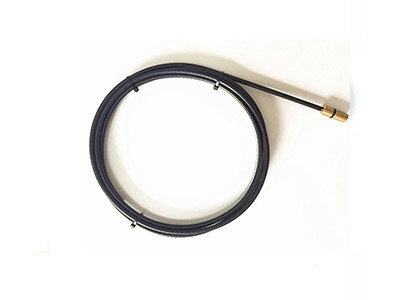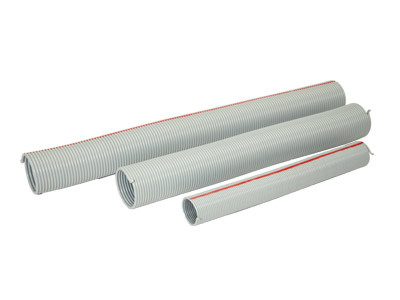The Impact of Compression Spring Design on Overall System Performance
Release Time:
2025-04-21
The Impact of Compression Spring Design on Overall System Performance When it comes to mechanical systems, every component plays a critical role in determining the overall efficiency and reliability of the system. One of the unsung heroes of such systems is the compression spring. In this article, we will delve into the intricate world of compression spring design and its profound impact on system

The Impact of Compression Spring Design on Overall System Performance
When it comes to mechanical systems, every component plays a critical role in determining the overall efficiency and reliability of the system. One of the unsung heroes of such systems is the compression spring. In this article, we will delve into the intricate world of compression spring design and its profound impact on system performance. We will discuss the various factors influencing design choices, explore advanced materials, and provide practical insights to help you enhance the performance of your systems.
Table of Contents
- Introduction to Compression Springs
- Importance of Spring Design in Systems
- Factors Affecting Compression Spring Performance
- Materials Used in Compression Springs
- Spring Design Optimization Techniques
- Application of Compression Springs Across Industries
- Case Studies: Real-World Applications
- Frequently Asked Questions (FAQs)
- Conclusion
Introduction to Compression Springs
Compression springs are mechanical components designed to resist compressive forces. They are typically made from coiled wire, which allows them to store potential energy when compressed and release it when needed. These springs are ubiquitous in various applications, from automotive suspension systems to consumer electronics, and their design is crucial for optimal performance.
Importance of Spring Design in Systems
The design of a compression spring significantly influences system performance. A well-designed spring can enhance energy efficiency, improve response time, and increase the lifespan of the entire mechanism. On the other hand, a poorly designed spring may lead to system failure, excessive wear, and reduced operational efficiency. Therefore, understanding the nuances of compression spring design is essential for engineers and manufacturers alike.
Energy Efficiency and Performance
A compression spring's ability to efficiently store and release energy directly impacts the performance of the systems in which they are integrated. By optimizing spring design, manufacturers can ensure minimal energy loss during operation, leading to longer-lasting and more reliable products.
Response Time and System Reliability
In applications where speed and responsiveness are key, the design of compression springs becomes even more critical. A well-designed spring will respond quickly to changes in force, enhancing the overall agility and performance of the system. This responsiveness is particularly important in fields such as robotics and automation, where precision is paramount.
Factors Affecting Compression Spring Performance
Several factors contribute to the performance of compression springs, including geometry, manufacturing processes, and environmental conditions.
Spring Geometry
The geometry of a compression spring—its diameter, coil count, and wire thickness—plays a significant role in its performance. For instance, a larger diameter spring can handle higher loads but may require more space. Conversely, a spring with fewer coils can exhibit greater stiffness but may have a reduced range of motion. Understanding the trade-offs associated with spring geometry is vital for optimizing design.
Manufacturing Processes
The method of production can also affect spring performance. Techniques such as cold winding and hot coiling each have distinct advantages and disadvantages, influencing material properties and overall spring efficiency. Selecting the appropriate manufacturing process can help ensure that the springs meet specific performance criteria.
Environmental Conditions
Compression springs are often subjected to various environmental conditions, including temperature fluctuations, humidity, and exposure to corrosive substances. These factors can impact the mechanical properties of the spring material, leading to potential performance degradation. Designing springs with protective coatings or using corrosion-resistant materials can help mitigate these risks.
Materials Used in Compression Springs
The choice of material is a fundamental aspect of compression spring design. Different materials offer varied mechanical properties, which can significantly affect performance.
Common Materials for Compression Springs
Some commonly used materials include:
- Carbon Steel: Offers good strength and durability, making it a popular choice for general applications.
- Stainless Steel: Known for its corrosion resistance, ideal for environments where exposure to moisture is a concern.
- Alloy Steel: Provides enhanced strength and fatigue resistance, suitable for high-load applications.
- Music Wire: A high-carbon steel wire known for its excellent tensile strength and elasticity, often used in precision applications.
Advanced Materials and Their Benefits
Emerging materials such as titanium and composite materials are gaining traction in the compression spring market due to their unique properties. Titanium springs, for example, are lightweight and corrosion-resistant, making them ideal for aerospace applications. Composite materials can offer tailored mechanical properties, enhancing performance while reducing weight.
Spring Design Optimization Techniques
Optimizing compression spring design involves a combination of theoretical analysis, simulation, and practical testing.
Finite Element Analysis (FEA)
FEA is a powerful tool that allows engineers to simulate the behavior of compression springs under various loads and conditions. By analyzing stress distribution and identifying potential failure points, designers can make informed adjustments to improve performance and reliability.
Prototyping and Testing
Building prototypes of compression springs and subjecting them to rigorous testing is essential for validating design choices. This iterative process allows designers to fine-tune specifications, ensuring that the final product meets all performance requirements.
Application of Compression Springs Across Industries
Compression springs are used in a wide range of industries, each with unique requirements and challenges. Here are a few notable applications:
Automotive Industry
Compression springs play a vital role in automotive suspension systems, providing support and stability while absorbing shocks from road irregularities. Their design must account for varying loads and dynamic movements to ensure optimal performance.
Aerospace Industry
In aerospace applications, compression springs are employed in various systems, including landing gear and control surfaces. The lightweight and durable nature of specific materials is crucial to meet stringent performance and safety standards.
Consumer Electronics
From laptop hinges to mobile phone mechanisms, compression springs are integral to the functionality of many consumer electronics. Their compact design and reliability are essential for creating sleek, user-friendly devices.
Case Studies: Real-World Applications
To illustrate the impact of compression spring design, let’s examine a few real-world case studies:
Case Study 1: Automotive Suspension Improvement
A leading automotive manufacturer faced challenges with the durability of their vehicle suspension systems. By optimizing the design of the compression springs through advanced materials and FEA simulations, they improved the lifespan of the springs by 30%. This enhancement led to increased customer satisfaction and reduced warranty claims.
Case Study 2: Aerospace Component Development
An aerospace company needed to develop a lightweight solution for their landing gear systems. By utilizing titanium springs, they reduced the overall weight of the landing gear by 15% while maintaining performance standards. This innovation contributed to improved fuel efficiency and reduced operational costs.
Frequently Asked Questions (FAQs)
What factors determine the optimal design of a compression spring?
The optimal design depends on load requirements, space constraints, material selection, and environmental conditions.
How does material choice impact compression spring performance?
Material choice influences the spring's strength, fatigue resistance, and ability to withstand environmental factors.
What are the benefits of using advanced materials in compression springs?
Advanced materials can enhance performance, reduce weight, and improve durability in demanding applications.
How can finite element analysis (FEA) assist in spring design?
FEA allows engineers to simulate and analyze stress distribution, helping to optimize design before physical prototyping.
Can compression springs influence energy efficiency in systems?
Yes, well-designed compression springs can minimize energy loss, thereby improving the overall efficiency of mechanical systems.
Conclusion
The design of compression springs plays a pivotal role in the performance of various mechanical systems. By understanding the factors that influence spring design, selecting the appropriate materials, and employing optimization techniques, manufacturers can significantly enhance the efficiency, reliability, and longevity of their products. As technology continues to advance, the potential for innovative spring designs will only grow, paving the way for new applications and improvements across industries. Embracing these principles can lead to a more efficient and sustainable future in manufacturing and engineering.
Related News







